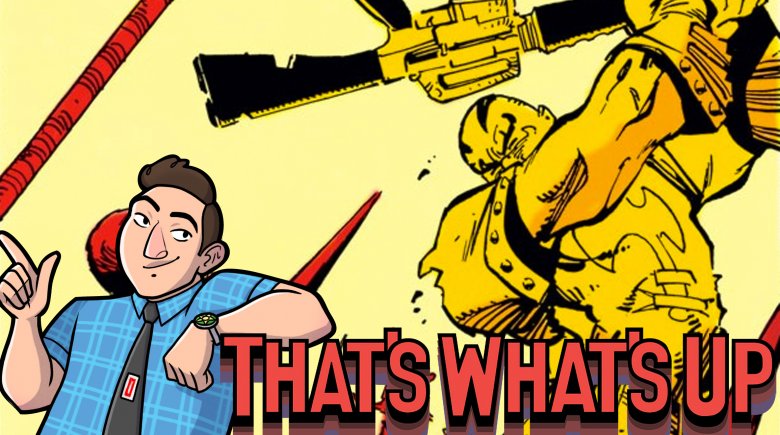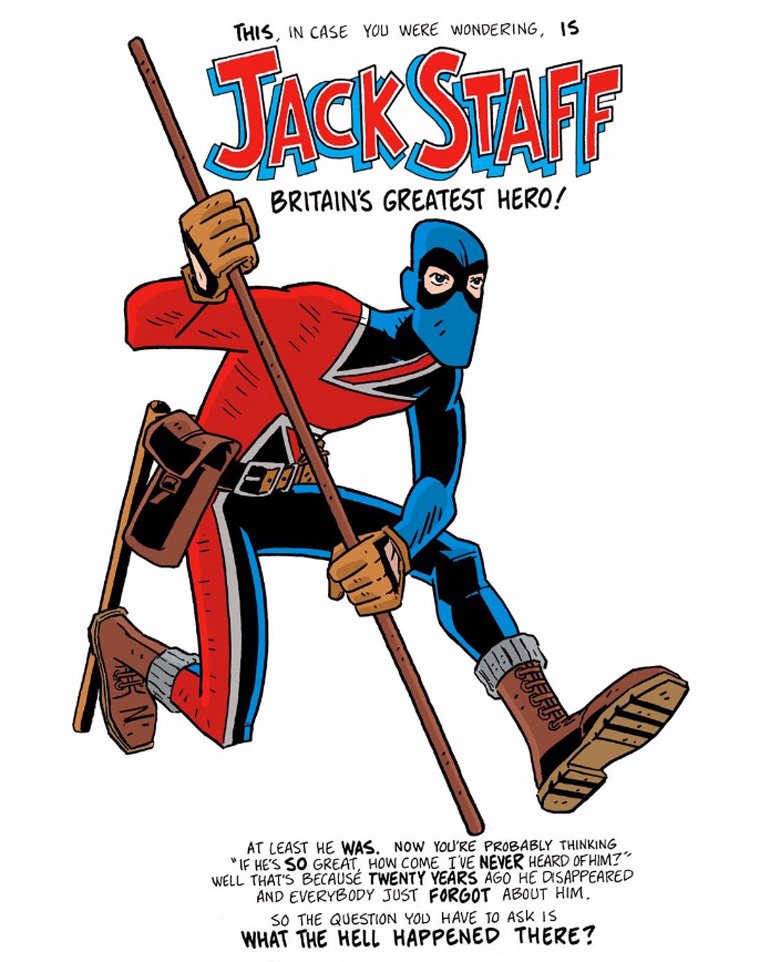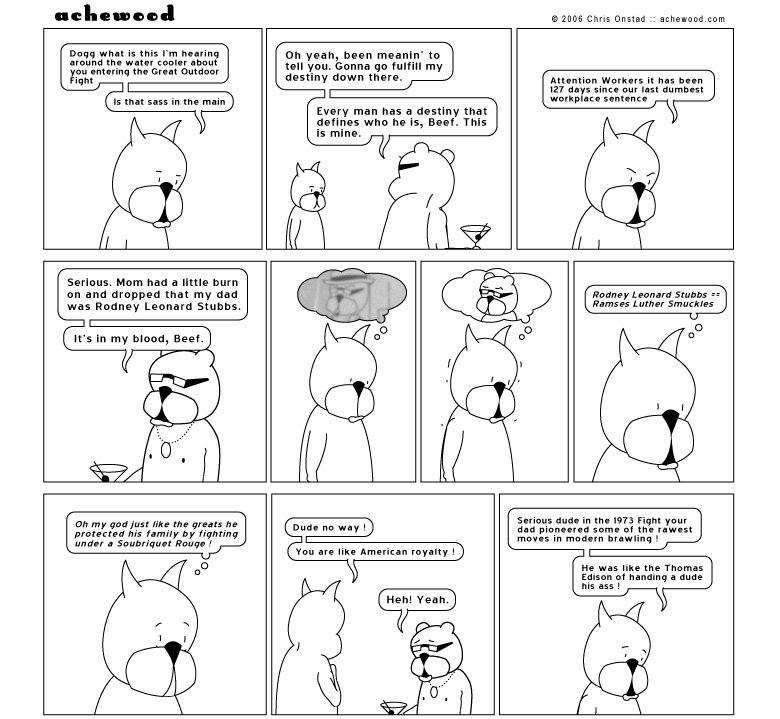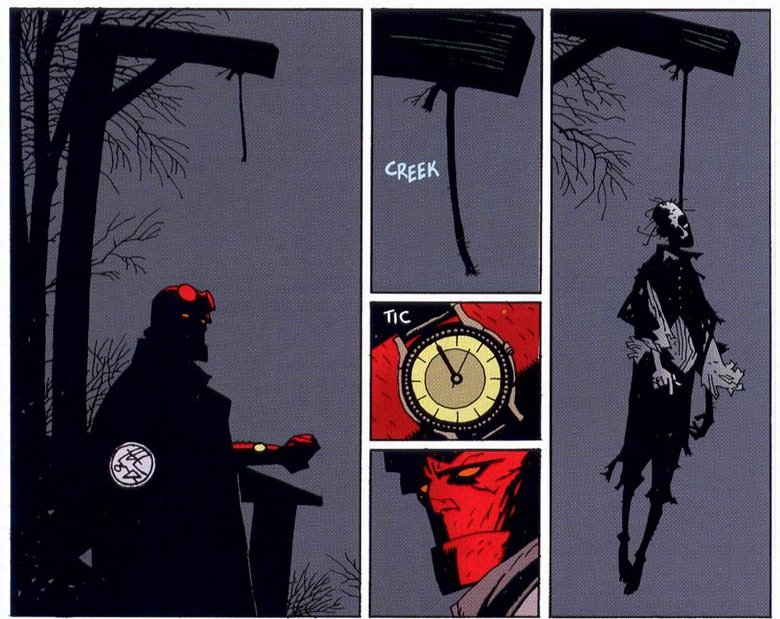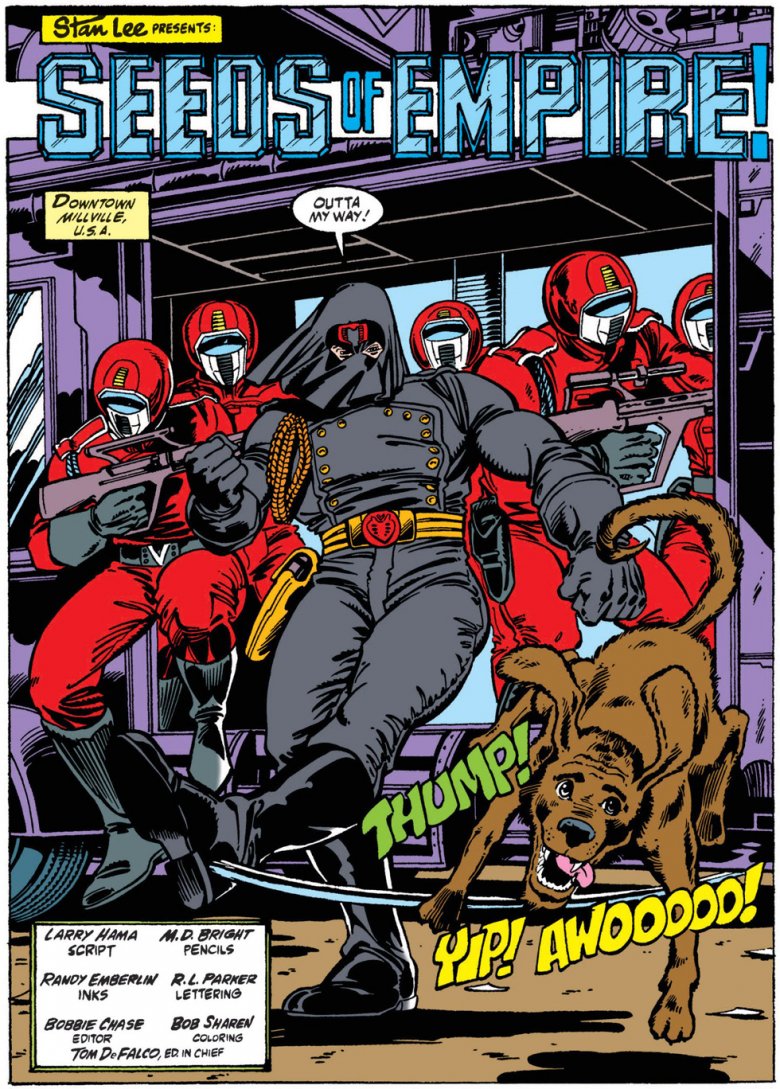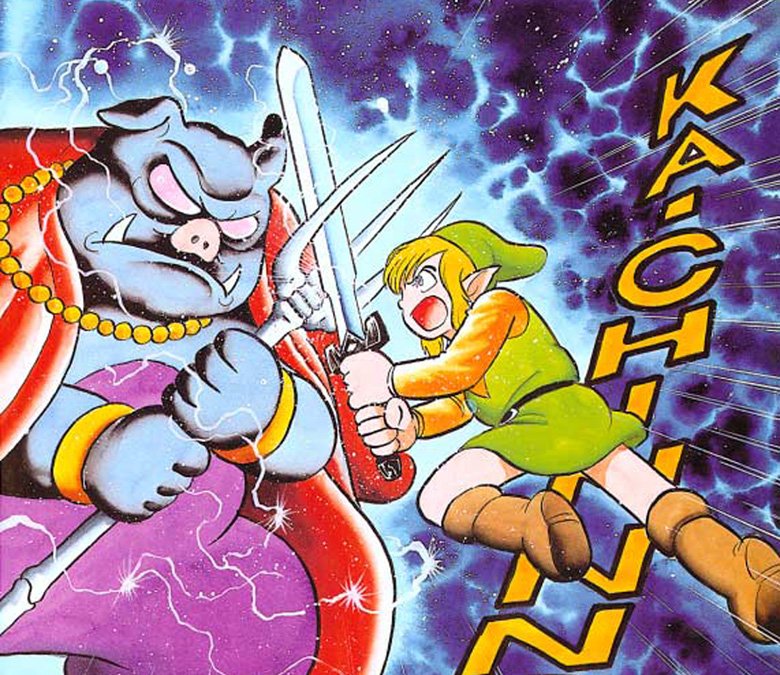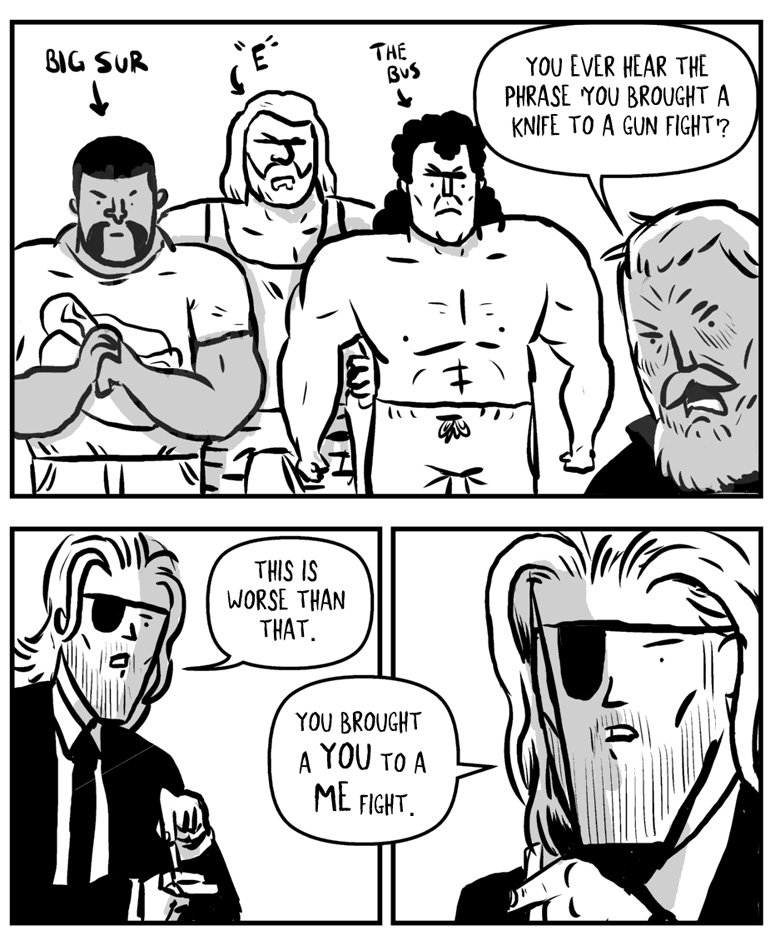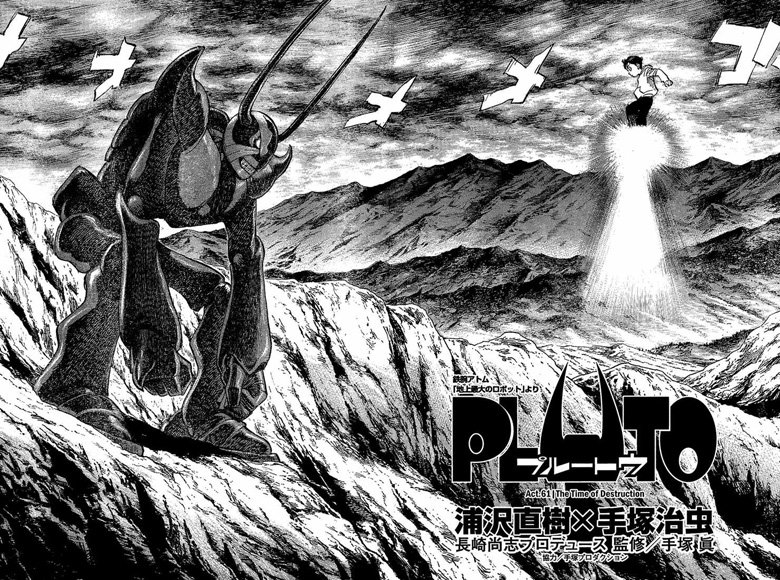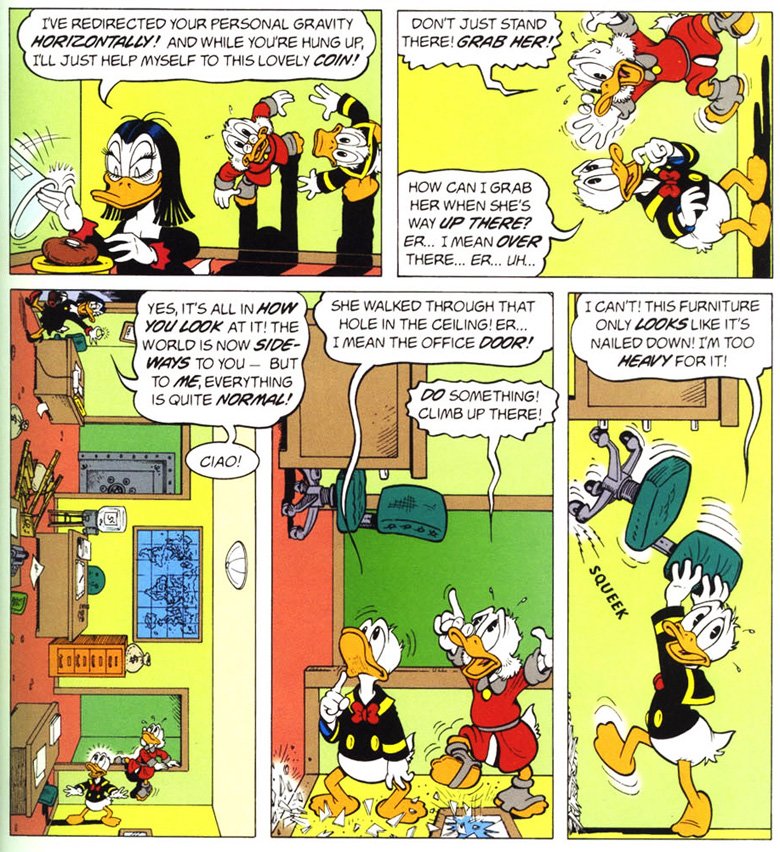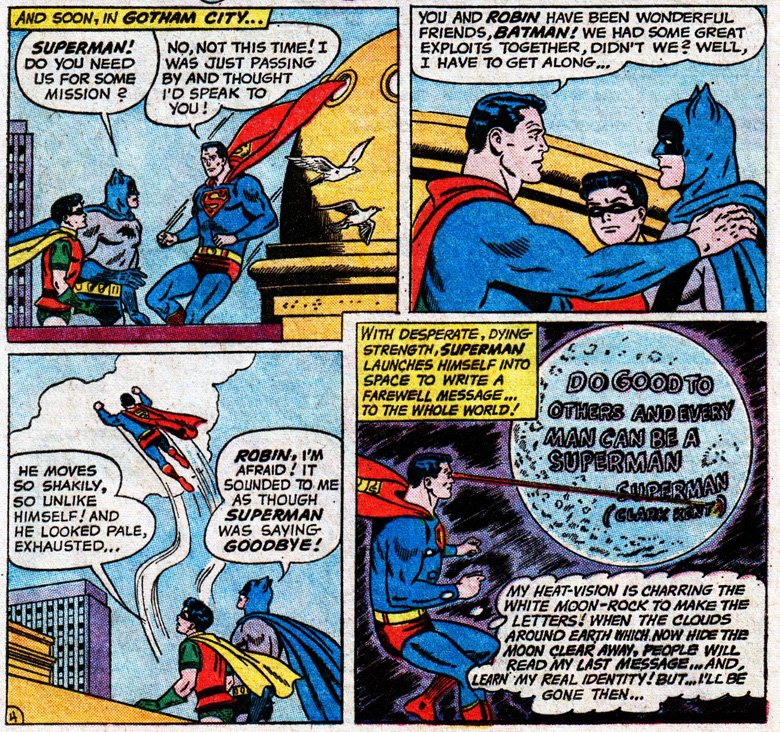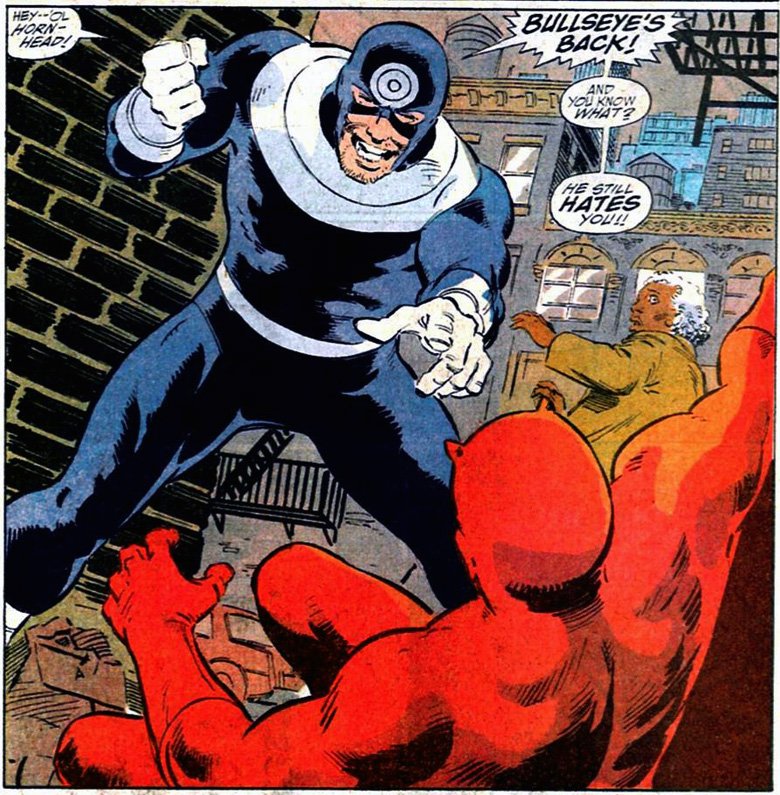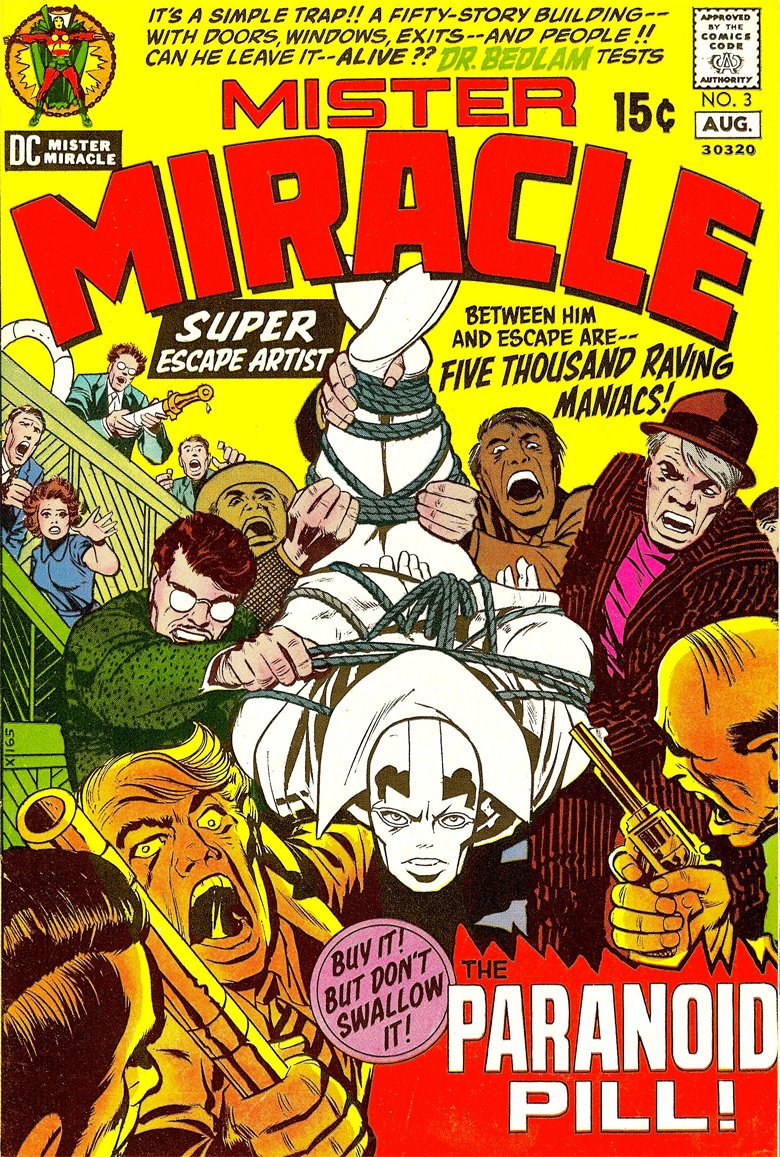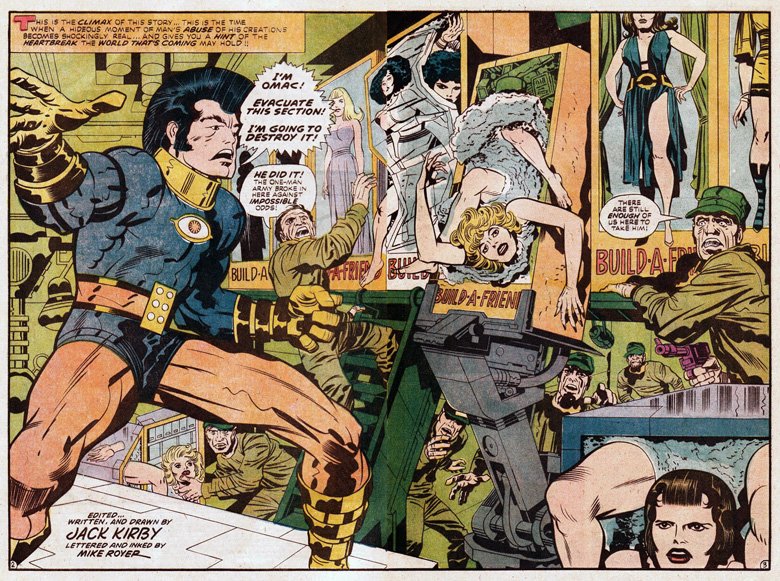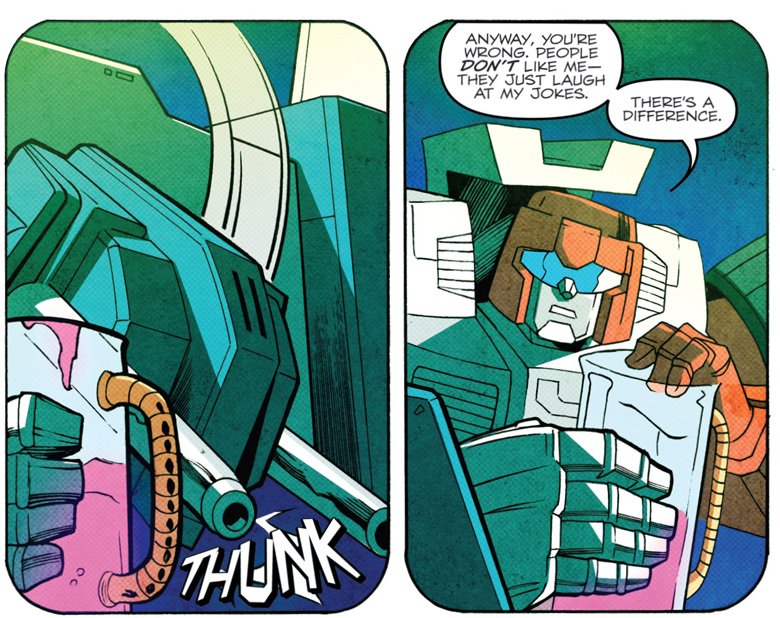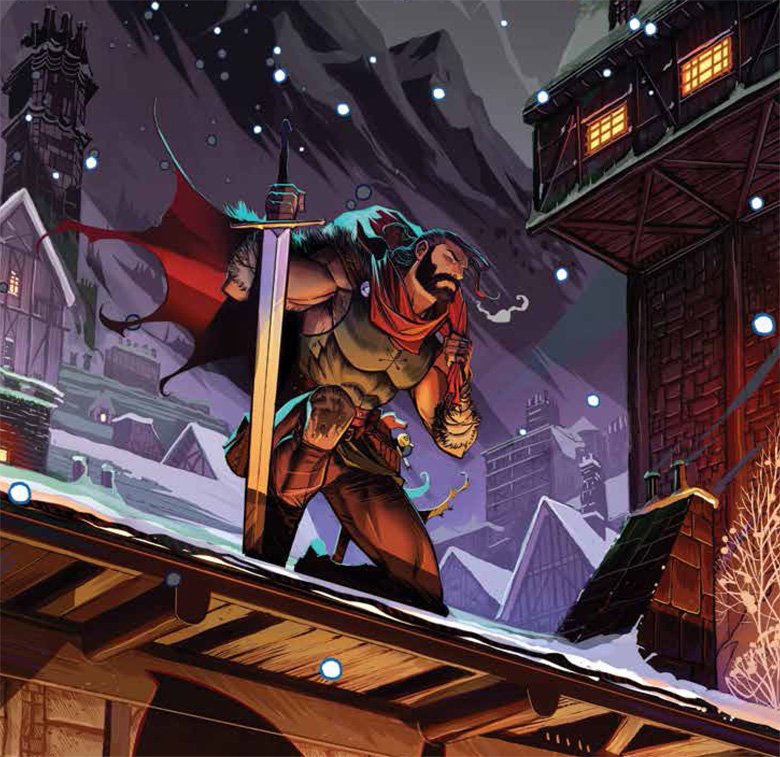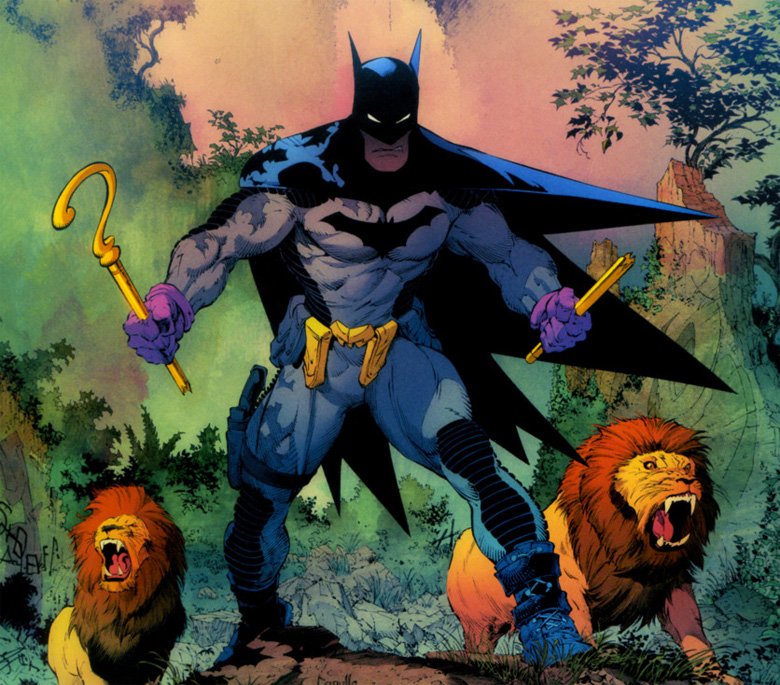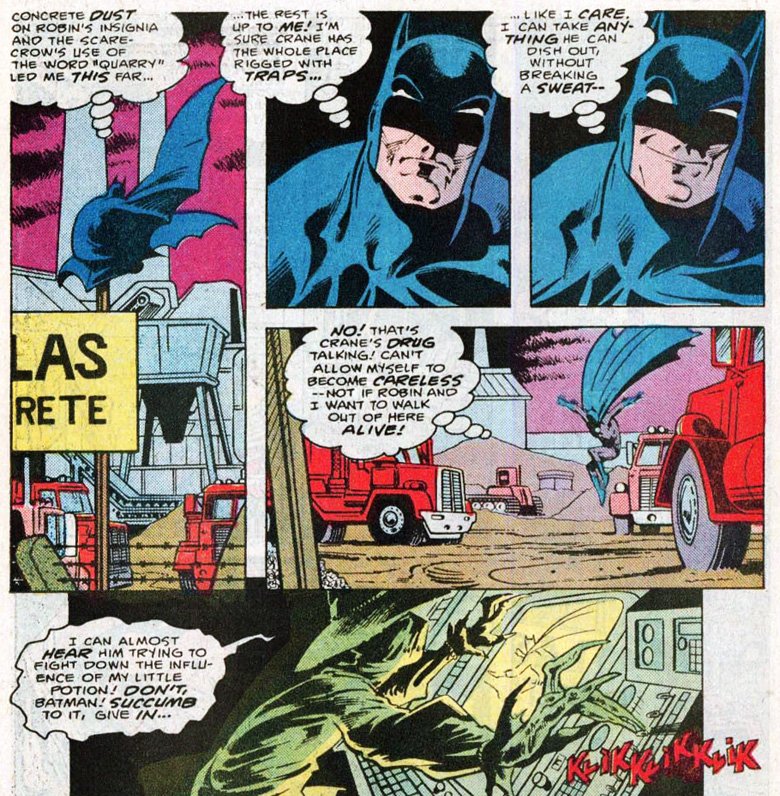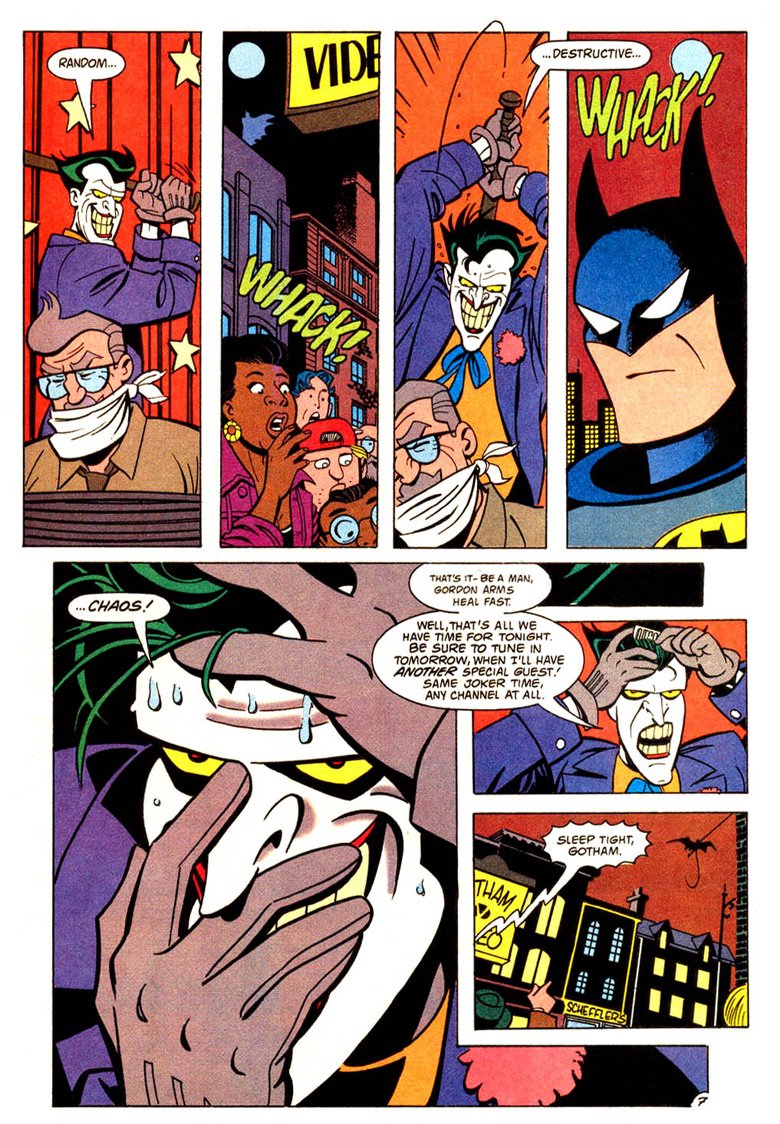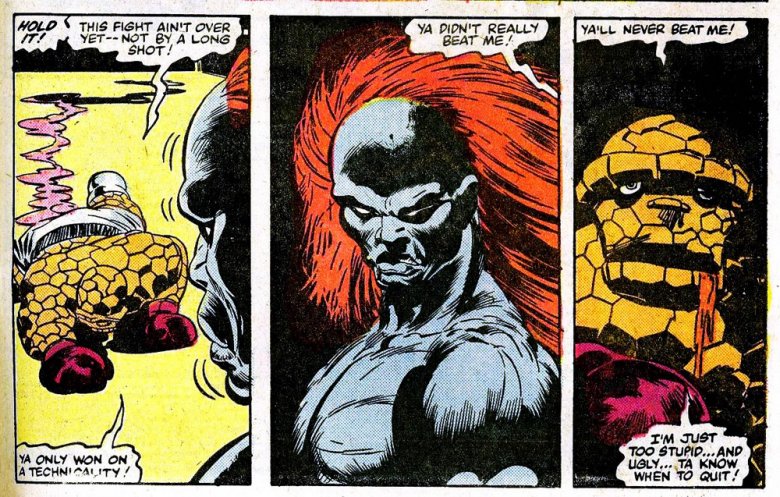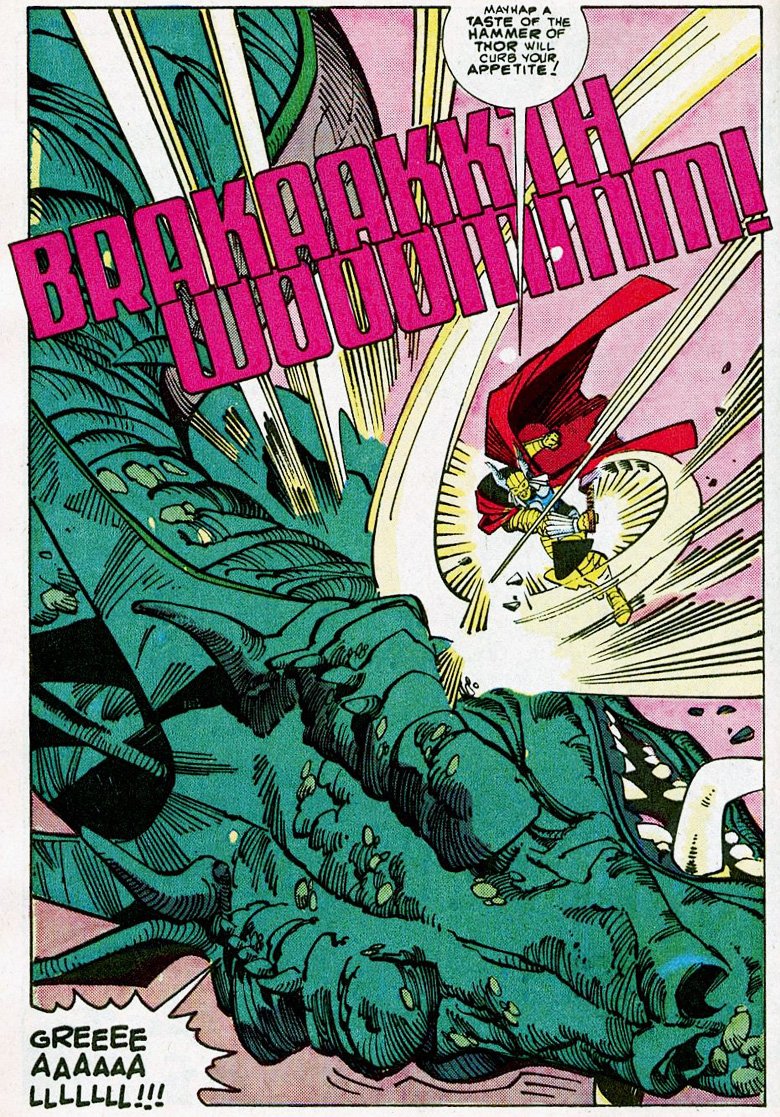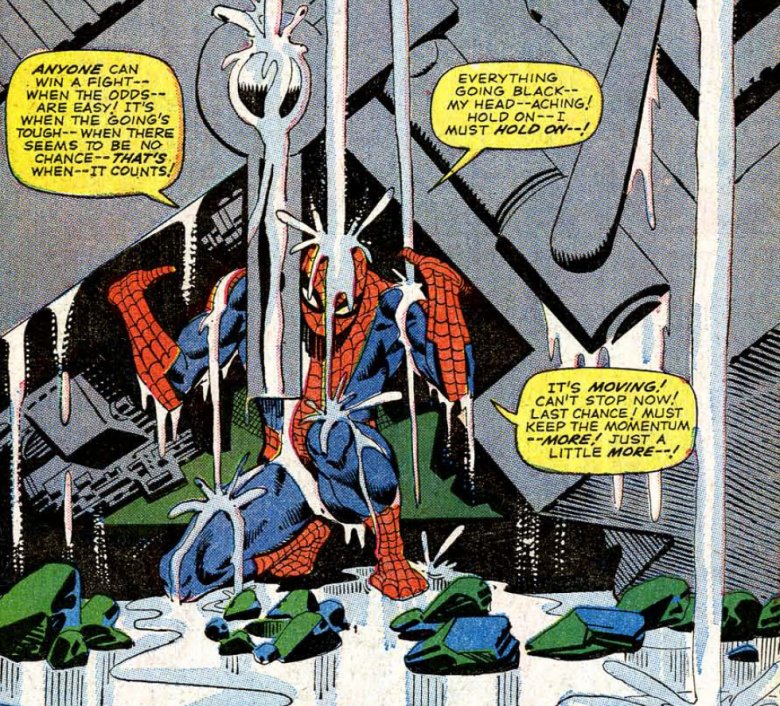That's What's Up: The 20 Best Comics Ever
Each week, comic book writer Chris Sims answers the burning questions you have about the world of comics and pop culture: what's up with that? If you'd like to ask Chris a question, please send it to @theisb on Twitter with the hashtag #WhatsUpChris, or email it to staff@looper.com with the subject line "That's What's Up."
Q: What is your favorite comic of all time, and which comic do you consider the best of all time? — @MelonArrow
This is a question I get asked a lot, and it's also one of the most difficult to answer. I'm someone who has some pretty hard opinions on things, and if you'd ask me my favorite piece of virtually any other medium, I'd be able to tell you easy. Favorite song? Favorite Jackie Chan movie? I can even tell you my single favorite joke on The Simpsons without hesitation, but comics? That's difficult.
There are so many great ones, so many incredible long runs and mind-blowing single issues, that it's hard to figure out how to narrow it down—and even if I do, there's a good chance that tomorrow, I'll be reminded of how great the Bob Haney/Ramona Fradon issues of Metamorpho were, and have to decide if those should be on the list instead. So how about this: instead of giving you my picks for a single favorite and a single objective best, I'll give you a top 20 and let you figure it out for yourself.
Jack Saff
There's a lot of different qualifiers, but there's one answer I almost always give when I'm asked for my favorite comic: Paul Grist's Jack Staff.
It's one of those books that does everything right, with some of the most innovative craftsmanship that I've ever seen. The page layouts are incredible, especially in the black-and-white issues where Grist uses negative space to create full environments, and the stories are always incredibly clever takes on the tricks of the superhero genre—I'm awfully fond of the one based on the premise of an entire city becoming the Hulk—but the best thing is how effortlessly he juggles multiple storylines, blending them together and separating them out.
The story doesn't just follow Jack Staff. There's a whole universe in there with a ton of characters, including my personal favorite, Becky Burdock: Vampire Reporter. In terms of pure bang for your buck, Jack Staff's the best thing that's ever been on a comic shop shelf.
Achewood: The Great Outdoor Fight
It's not exactly flawless, but there's a strong argument to be made for Chris Onstad's Achewood as the single best comic of the 21st century. It's tough to get into, sure, but Onstad has a way with language that's up there with P.G. Wodehouse, and a knack for exploring subjects like depression, loss, and Airwolf (the super-helicopter from the television show of the same name) with equal emotional resonance and genuinely hilarious punchlines.
Great Outdoor Fight is the strip's best story in a walk. Like most Achewood, it's built on a weird idea: an annual no-holds barred battle royale between 3,000 men dating back to the 1920s. When Ray Smuckles, the strip's thong-wearing de-facto main character, discovers his father is a former winner, he decides to enter and win, with his perpetually depressed best friend Roast Beef joining him as a sidekick and "fight scholar." Also, they're all cats. Just go with it.
What follows is an story about fathers and sons, trying to live up to an impossible legacy, and what it means to be someone's best friend in the face of something that's meant to tear you apart—and also fight scenes where country singers get their faces torn off. In other words, it's got everything a great comic needs.
Hellboy: The Corpse
Mike Mignola's Hellboy is pretty great in general, but "The Corpse" is basically a perfect comic. Originally told in two-page installments, it's based on bits of English and Irish folklore, and finds Hellboy traveling to three graveyards to bury a surprisingly snarky corpse before dawn in order to rescue a child who's been kidnapped by the Sidhe.
The art's beautiful, especially the way Hellboy himself is colored as a flat, bright red against the story's dark backgrounds, and it also underlines how adaptable he is as a character. As great as the larger Hellboy mythology is, stories like this that are where Mignola's effortless adaptability shines.
G.I. Joe #100: Seeds of Empire
For a comic that was based on a toy line and existed almost entirely to get impressionable kids to buy action figures, Larry Hama's run on G.I. Joe is way better than it has to be. Over the course of its original 155-issue run (plus another 40 of Special Missions), it produced some true classics, and still stands as one of the best long runs ever.
As tempting as it is to go with the famous "Silent Interlude" (#21) or the over-the-top action of the Snake Eyes Trilogy (#94-96), Hama and M.D. Bright's "Seeds of Empire" in #100 is my favorite. Not only does it mark the return of the one true Cobra Commander—who literally kicks a puppy on the first page—but he takes over a town by preying on economic anxiety and claims that they're the real Real Americans. It all leads to a great story about Joes trapped behind enemy lines that's genuinely thrilling, smart, and surprisingly relevant, and allows the Commander to be sinister and hilarious.
The Legend of Zelda: A Link to the Past
It might seem weird that one of the best comics of all time can be found in the pages of Nintendo Power, but that magazine actually produced a whole slate of great ones. Kentaro Takemura and Charlie Nozawa's Super Mario Adventures is terrific, and Benimaru Itoh's StarFox is like Moebius meets Nintendo in the best way.
The best, though, is the adaptation of A Link to the Past that ran from January to December of 1992. That makes sense, too, since Nintendo got the legendary Shotaro Ishinomori—the guy who created Kamen Rider and the Power Rangers franchise, among other things—to tell the story. The result is an epic fantasy that takes a loose approach to the events of the game, introducing new characters and an adventure across a sprawling version of Hyrule to make Link's battle with Gannon seem even bigger than ever.
Sexcastle
Fair warning: this one might actually be the most biased pick on the list, as Kyle Starks is a friend of mine. For real, though? That dude could've punched me in the face and called me the meanest names he could think of, and Sexcastle would still be one of my favorite comics of all time.
It's Starks' tribute to '80s action movies like Road House and Commando, with Shane Sexcastle as a former assassin who just wants to work in a flower shop and winds up in a fight scene that lasts for about 120 pages. It's brilliant and hilarious, and also involves gunchuks, which are nunchuks that are also guns. If that wasn't enough to get it a spot on this list, "you brought a you to a me fight" would be.
Pluto
I wrote about this one pretty extensively here, but the short version is that Naoki Urasawa's adaptation of Osamu Tezuka's best-loved Astro Boy story is the greatest grim-and-gritty reboot of all time.
Uncle Scrooge: A Matter of Some Gravity
Thanks to creators like the unbelievably good Carl Barks, there are enough great Scrooge McDuck adventures to fill up an entire list by themselves—including the one that famously inspired the opening sequence of Raiders of the Lost Ark.
My favorite, though, is Don Rosa's "A Matter of Some Gravity." It's not quite as well-known as Rosa's exhaustively researched and beautifully crafted magnum opus, The Life & Times of Scrooge McDuck, but it has a premise so clever that it makes you mad you didn't think of it first, and leads to the kind of story that you can only tell this way in comics.
The basic idea is that Magica DeSpell, in an effort to finally steal Scrooge's Number One Dime, zaps Scrooge and Donald Duck with a curse that alters their personal gravity, sending them falling sideways. This leads to 16 pages of stories in which the the two ducks have to "climb" across floors and walls and risk "falling" sideways to their deaths. It's brilliant, and if you've never read it and want a bite-size sample of how good Uncle Scrooge can be, it's well worth seeking out.
Superman #156: The Last Days of Superman
All Star Superman is justifiably regarded by most readers as the best Superman story for at least ten years in either direction, but one thing that's often glossed over is how good the stories that inspired it are—especially Edmond Hamilton and Curt Swan's "The Last Days of Superman."
Like All Star, the premise involves Superman finding out he's dying, and trying to do what he can to leave the world a better place before he's no longer around to save it. It's full of silliness, including an opening splash where Superman is being carried by a dozen tiny Kryptonians in the weirdest Pietà ever, but there's also a genuinely earnest quality to it that makes it really affecting. It might seem goofy for Superman to carve his final message to Earth on the face of the moon—and it is—but there's a mythological quality that makes it work.
It's worth noting that Superman's impending death is, of course, a bit of a hoax on Hamilton and Swan's part, but it's so good that it doesn't actually matter, and stands as one of the best stories of the entire Silver Age of comics.
Daredevil #290: Bullseye
I will never understand why Ann Nocenti's run as the writer of Daredevil isn't as well-known or beloved as Frank Miller's. It's full of issues with wild premises like Daredevil defeating Ultron by crashing a pickup truck into him and then beating him into pieces with a stick, but they're balanced out by a thoughtful take on superheroism in which every act of violence is treated as a failure, and the psychology of its characters are often the focus.
While the most enduring part of her run was the introduction of Typhoid Mary, the good stuff goes far beyond that, building to an arc with artist Kieron Dwyer where Bullseye starts impersonating Daredevil in order to ruin his reputation, and winds up truly believing he is Daredevil. The real Daredevil responds by dressing up as Bullseye, re-creating their classic fights but with a psychological twist that deals with identity and self-perception, and winds up as a masterpiece of complicated storytelling.
Mister Miracle #3 - 4: The Paranoid Pill
For all that I love the cosmic mythology of Jack Kirby's Fourth World saga, I have to admit that some of my favorite parts are the ones that don't deal with the nature of good and evil and how that struggle exists within all of us. Don't get me wrong, that stuff's great, but sometimes, you just want to see a high concept in action.
Mister Miracle #3 manages to do both at the same time. It's one of the stories where Mister Miracle is trying to win his freedom from the sinister machinations of Apokolips by defeating the traps set by Darkseid's lieutenants, with what seems like a simple challenge. All he has to do is enter a skyscraper at the 50th floor and leave through the front door on the street. The twist is that Dr. Bedlam has mind-controlled the building's innocent occupants into a murderous mob hell-bent on killing Scott Free.
It's a reverse Die Hard that ends with Scott being locked in a safe and thrown into a vertigo-inducing 45-story drop, and on top of that, it introduces Big Barda and kicks off the greatest romance in comics history.
OMAC: The One Man Army Corps
Jack Kirby's one of those creators who makes it almost impossible to figure out a single book that encapsulates his best work (there are about a dozen strong contenders from Fantastic Four alone), but my personal favorite has to be OMAC.
It's Kirby's take on dystopian sci-fi, and for all its wild, explosive storytelling of the One Man Army Corps crashing through walls and battling a hundred thousand foes—literally the plot of #3—the thing that really makes it stand out is how prescient it was. We don't have satellites capable of performing "Electro-Hormone Surgery" from orbit just yet, but the villains of OMAC were the ones creating artificial "friends" that could be rigged to explode, or the super-rich who lived outside the law. There's even a text piece in the first issue where Kirby talks about the inevitability of the Internet in 1974. It's big and noisy and full of punches, but it's up there with Kamandi and his return to Captain America as some of his best work of the era.
Transformers: More Than Meets The Eye
I was never a Transformers fan growing up, but so many people told me that More Than Meets the Eye, by James Roberts, Nick Roche, Alex Milne, Brendan Cahill, and others, was the best comic going that I finally broke down and read it a couple years ago. They were right.
The big trick of MTMTE, and its follow-up series Lost Light, is that it's about giant transforming robots that are written as people, with all the relatable neuroses and flaws people have. The bigger trick, though, is that for all that its characters are relatable and human, they're in the kind of stories that you can only tell with giant transforming robots who have lifespans in the millions of years and warp drives that create alternate universes based on quantum probability. It's great sci-fi, great comedy, great character work, and it's even great romance—and it'll break your heart into a million pieces.
Klaus
If you clicked on the link to my favorite song above, then you already know how I feel about Christmas. It shouldn't come as a surprise, then, that Grant Morrison and Dan Mora's Klaus, an origin story for Santa Claus that reads like the Rankin-Bass Santa Claus Is Comin' to Town rewritten to star Batman, is one of my favorite things ever. Not favorite comics, you understand. Favorite things, right up there with brown paper packages tied up with string.
Mora's art is great for a story of Santa Claus as a fantasy hero, and as for the story, well, it's undeniably Morrison, full of stuff like toy-making elves that are actually aliens from a psychotropic higher dimension. The thing is, it's also undeniably Santa Claus. He's a friend to children who brings presents and battles against the somber bitterness of Grimsvig, but he's also an action hero with a direwolf pulling his sleigh and a sword to wield against the wicked.
Batman: Zero Year
And now, we've reached the Batman portion of the list. Settle in, we'll be here a while.
For years, Frank Miller and David Mazzucchelli's Batman: Year One was my all-time favorite comic, and definitely my favorite Batman story. The further we get away from both of them, though, the more I prefer the latest take on Batman's origin—Scott Snyder, Greg Capullo, Danny Miki and FCO Plascencia's Zero Year.
It comes down to the approach. Year One was rooted in the urban crime wave of the '80s and all that came with it, a darker and (slightly) more realistic version of Batman than we'd seen before. Zero Year, on the other hand, wasn't about the fear of street crime. It was about, as Snyder said in interviews while it was coming out, the fear that you could wake up on a sunny Tuesday morning and find out that the world was crumbling around you. It was about Batman standing, more than anything else, as a force against nihilism.
It skews away from the darkness of Year One rather than trying to recreate it, and the result is a colorful, action-packed superhero story with Batman fighting against bone monsters and the Riddler's plan to jumpstart the apocalypse. Yes, the Riddler.
Detective Comics #571: Fear for $ale
While they were often overshadowed by darker stories like Year One at the time, Mike W. Barr and Alan Davis's run on Detective Comics produced some of the best Batman stories of the '80s, and a couple that are in serious contention for Greatest of All Time status.
My favorite: "Fear for $ale," in which the Scarecrow doses Batman with a chemical that takes away his fear rather than amplifying it, leaving the Dark Knight an overconfident grandstander on a mission to rescue Robin. It's a great idea, complemented by the way Davis switches from Batman's usual determined scowl to a cocky grin from one panel to the next as the chemical takes hold, leading to the Scarecrow getting one of the most beautifully rendered punches in Batman history. Plus, the reveal at the end—of what Batman is truly afraid of—sets up the gut punch of Death in the Family better than anything.
Batman Adventures #3: The Joker's Late-Night Lunacy
One final favorite Batman story before we move on, and it's a good one. You can keep your Killing Joke, this is my pick for the best Joker story of all time.
Kelley Puckett and Ty Templeton start with a premise that's been done a dozen times, including on B:TAS itself: the Joker hijacking a TV station to terrorize Gotham via the airwaves. The difference is that in this one, they present the Joker as genuinely terrifying in a way that even the show never got to. In 1992, 16 years before Heath Ledger's performance in The Dark Knight, this was a Joker who tied Jim Gordon to a chair and beat him with a baseball bat while forcing Gotham (and Batman) to watch, all in the name of pure, random chaos.
I read this when I was ten years old, and that page of the Joker gleefully breaking Gordon's arms? It was the most afraid I've ever been of a supervillain. To make things just a little more terrifying, he gets away at the end. At the end of the day, Batman Adventures was every bit as good as its animated counterpart, and stories like this are why.
Marvel Two-In-One Annual #7: And They Shall Call Him.. Champion!
If there's one thing that should be apparent from this list, it's that I love comics where goofy ideas turn into surprisingly emotional stories, and there's no single issue that does that better than Marvel Two-In-One Annual #7.
The goofy idea this time: an Elder of the Universe named the Champion comes to Earth to test his mettle against the world's strongest super-heroes in a series of boxing matches, forcing them to fight with his nigh-infinite power. He takes out everyone from Thor—whose use of a hammer constitutes a DQ—to the Hulk, whose savage mind makes him ill-suited for the sweet science. It finally comes down to Ben Grimm, and while he's no match for the Champion's strength, he just doesn't stay down. As easy it is to go to a story like "This Man, This Monster," this is the Thing's defining moment for me.
Thor by Walt Simonson
Walt Simonson's run on Thor defined the character in a way few creators have ever managed approach. Taken as a whole, it's arguably the best and most consistent collection of superhero comics ever, and it has some of the best moments in Marvel history.
The best is unquestionably #362's "Into the Valley of Death," but in the interest of avoiding spoilers for anyone who hasn't read it, I just want to take a moment to mention "Mjolnir's Song" from #381. That's the issue that's all full-page splashes, where Thor fights the Midgard Serpent and hits him so hard that he breaks every bone in his own body.
Amazing Spider-Man #33: The Final Chapter
Finally, we have my pick for what is objectively the single best comic book ever printed: "The Final Chapter" from Amazing Spider-Man #33. If Ben Grimm was the prototype of the hard-luck hero, Peter Parker was the refined version, and this story has all the never-say-die emotion of that MTIO Annual ramped up to the millionth degree. It's so iconic that I've described it before as "the one where Spider-Man does the thing"—lifting that wreckage because he needed to do it has become his defining trait. And it's even more impressive when you consider that, according to Sean Howe's Marvel Comics: The Untold Story, Stan Lee and Steve Ditko produced it without ever actually speaking to each other.
But, you know, ask me again tomorrow and you might get a different answer. This one's probably going to stay at the top, though.
Each week, comic book writer Chris Sims answers the burning questions you have about the world of comics and pop culture: what's up with that? If you'd like to ask Chris a question, please send it to @theisb on Twitter with the hashtag #WhatsUpChris, or email it to staff@looper.com with the subject line "That's What's Up."
